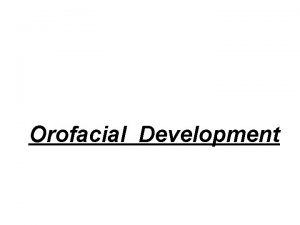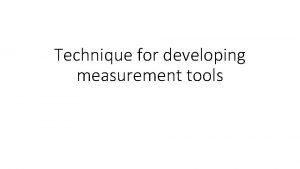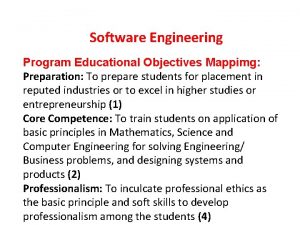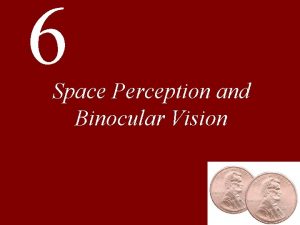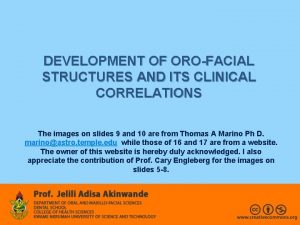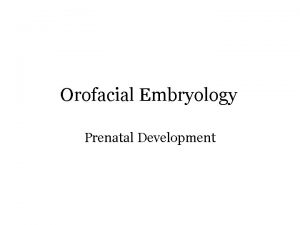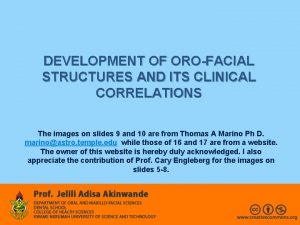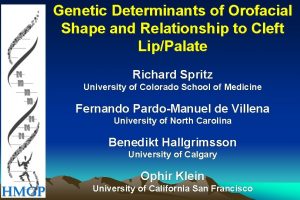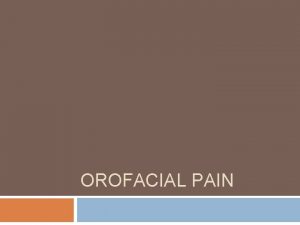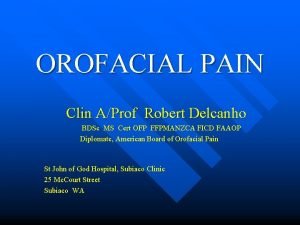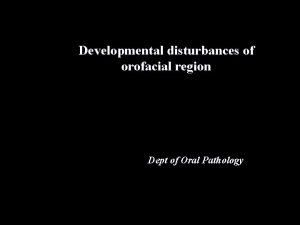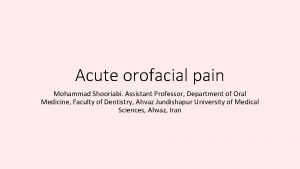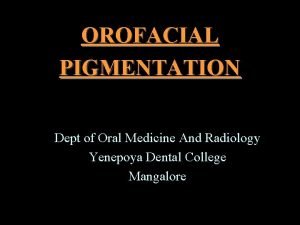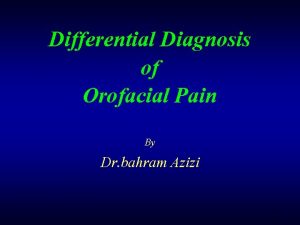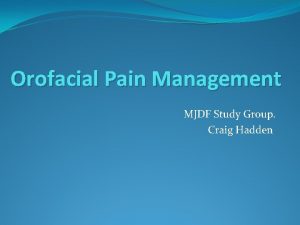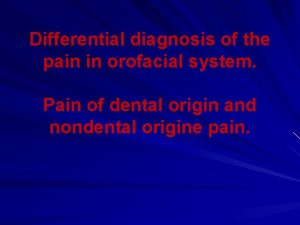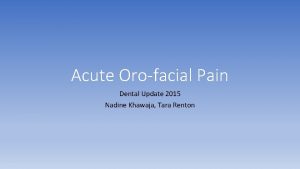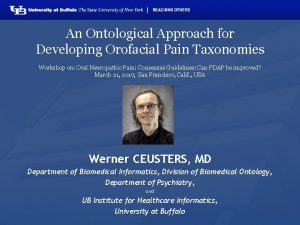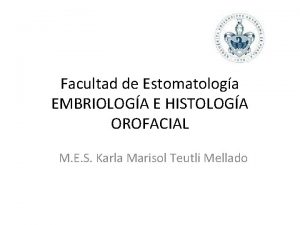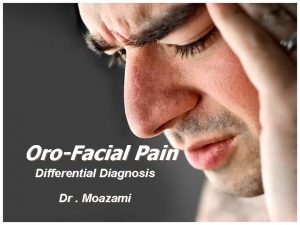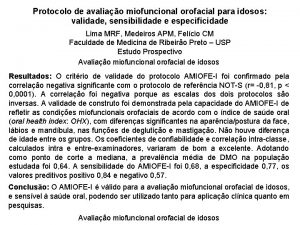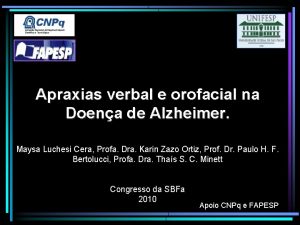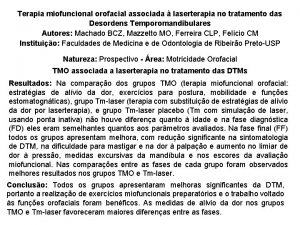Orofacial Development 3 rd W IU the STOMODIUM























































- Slides: 55

Orofacial Development





3 rd W. IU the STOMODIUM is bet. 3 prominences Of the brain above& Primitive Heart below

4 th W. IU STOMODIUM surounded by 5 prominences



The 2 mandibular processes(1 st arch) give: lower jaw , lower lip, chin &lower portion of the cheeck The 2 MNP(frontonasal); philitrum of the lip, pre-maxilla& primary palate The 2 LNP(frontonasal); alae of the nose& lateral part of the check The 2 maxillary processes(1 st arch); lateral of upper lip, Maxilla &check related&2 ndary palate *In the groove Bet. Max. &LNP develops nasolacrimal duct


The lateral nasal processes form the: A. nostrils. B. philtrum. C. stomadeum. D. ala of the nose. The medial nasal processes form the: A. nostrils. B. philtrum. C. stomadeum. D. ala of the nose.

DEVELOPMENT of the JAWS • • Originate from neural crest cells Mandible is 2 nd bone ossify Maxilla 3 rd bone ossify They develop from the 1 st pharyngeal arch • By intramembranous ossification • (dermal)

MANDIBLE • Meckel, s cartilage (1 st arch) • 6 W. I U from Ear to mid as guide line

V 3 divides in to lingual medial& inferior alveolar lat. IA at mental foramen divides into incisive&mental

Devlopment of the body At the mental foramen primary center of OSSIFICATION fore each side start, gives trough of the body around the incisive nerve& inferior alveolar. Ant. To the symphysis, post. to the lingula. cartilage disappear except from…. Development of the alveolar process starts when the tooth germ of the deciduous teeth develop then the bone surround the germ separated by bony septa into sockets&inferior alveolar canal. The process grows rapidly at tooth eruption



Development of the ramus: 3 -secondary cartilages from chondrocranium

GROWTH of MANDIBLE It is the leading factor in the facial • growth. 1 -2 ndary cartilage • growth(condylar) 2 -development of alveolar process • 3 -subperiostial apposition& • resorption (enhanced by the functional units)




Development of TMJ

MAXILL: -2 PARTS a- pre maxilla(MNP) b-maxilla proper (maxillary process)

Maxilla proper: Intramemb. by a center at the canine area around infra-orbital nerve in addition to; Alveolar process, palatal process& maxillary sinus Pre-maxilla: Palato-facial center at ASA above B_ Prevomer center AT 8 W. UI PRE. &MAXILLA UNIT Acessory cartilages: -1 -molar process 2 alveolar plate 3 -midline


PALATE: -Single oro-nasal cavity occupied by tongue separated only anteriorly by: 1 -PRIMARY PALATE(MNP) 2 -2 ndary PALATE starts as 2 palatine shelves(vertical)

tongue drop , then shelves grow horizontal & fuse with each other & nasal septum by medial edge epithelium which is designed to die &repaced by mesenchymal cells to ossify. posteriorly develops soft palate

1 -What is the origin of the mandible? • a) Branchial arch I • b) Branchial arch II • c) Branchial arch III • d) Branchial arch IV • e) Not of the branchial arch origin

2 -WHICH OF THE FOLLOWING IS NOT A CORRECT PAIRING OF EMBRYONIC STRUCTURE AND ADULT DERIVATIVE? • a- Maxillary processes: secondary palate. • b- Primary palate: upper incisor teeth. • c- Second pharyngeal arch: mandible. • d- Lateral lip: lateral nasal process.

3 -An oblique facial cleft is formed: • a- Due to the rupture of the buccopharyngeal membrane. • b- When the maxillary process fails to fuse with the mandibular processes. • c- When the maxillary process fails to fuse with the lateral & medial nasal process. • d- When the medial nasal process fails to fuse with the maxillary process

4 -Which of the following does contribute to the formation of the upper lip? • a- Lateral nasal process. • b-Two maxillary processes & medial nasal process. • c- Medial nasal process. • d- First branchial arch. 5 - The palatal shelves (palatine processes): • a- Are covered by endoderm. • b- Are derived from the primary palate. • c- Must assume a vertical position for palate closure to occur. • d- Are derived from the first branchial arch.

Figure from Ten Cate’s Oral Histology, Ed. , Antonio Nanci, 6 th edition


DEVELOPMENT of THE TONGUE MUSCLES From the occipital somite innervated by te hypoglossal except platoglossus MUCOUS MEMBRANE From the pharyngeal arches hence the innervation the ant. 2/3 lingual(1 st. ) general chorda tympani(2 nd. ) taste. Posterior 1/3 general& taste 9 th (3 rd. ). including valate papillae Vallecula + epiglitis internal laryngeal th

The mucous membrane: - Ant. 2/3 rds(1 st • arch) 2 LINGUAL SWELLINGS+tuberculum impar Post. 1/3 rd(3 rd&4 th arches) COPULA (hypobranchial) fuse at foramen cecum




Thyroglossal duct cyst

Lingual thyroid



DEVELOPMENT of THYROID GLAND Proliferation of epithelium of the pharynx at foramen cecum. Descend as bilobed diverteculum infront of the pharynx, at the thyroid cartilage aquied amedian ithmus and 2 lobe the duct disappear and the 4 th bouch forms ultimobranchial body gives XC. cells Persistant ducts leads to thyroglossal cyst or fistula

• A patient present with an asymptomatic soft, fluctuant swelling of the angle of mandible anterior to sternocleidomastoid muscle which he stated to be present since his childhood days. Regional lymph nodes are nonpalpable with normal radiographic pictures of the area and normal blood and urine examination. Aspiration of swelling shows yellow-brown fluid. Most probable diagnosis in the condition is: • A- thyroglossal duct cyst B- salivary gland tumor C- branchial cleft cyst D- lymphadenoma

A patient presented with asymptomatic, • smooth, circumscribed red area in midline anterior to circumvallate papillae on the dorsum of tongue with microscopic evidence of epithelial hyperplasia. The most probable diagnosis of the condition is: A-geographic tongue B-hairy tongue C-median rhomboid glossitis D-lingual thyroid

Oral-facial clefts Due to failure fusion of the processes •




Cleft Palate


Cleft Lip

Unilateral upper lip cleft is due to failure of fusion of: a) Medial nasal processes b) Maxillary and lateral nasal processes c) Maxillary and medial nasal processes on one side d) Maxillary and mandibular processes e) Medial and lateral nasal processes unilateralla.
 Stomodium
Stomodium Sơ đồ cơ thể người
Sơ đồ cơ thể người Thế nào là số nguyên tố
Thế nào là số nguyên tố Công của trọng lực
Công của trọng lực Tỉ lệ cơ thể trẻ em
Tỉ lệ cơ thể trẻ em đặc điểm cơ thể của người tối cổ
đặc điểm cơ thể của người tối cổ Các châu lục và đại dương trên thế giới
Các châu lục và đại dương trên thế giới ưu thế lai là gì
ưu thế lai là gì Thẻ vin
Thẻ vin Môn thể thao bắt đầu bằng từ chạy
Môn thể thao bắt đầu bằng từ chạy Tư thế ngồi viết
Tư thế ngồi viết Cái miệng nó xinh thế
Cái miệng nó xinh thế Hình ảnh bộ gõ cơ thể búng tay
Hình ảnh bộ gõ cơ thể búng tay Từ ngữ thể hiện lòng nhân hậu
Từ ngữ thể hiện lòng nhân hậu Trời xanh đây là của chúng ta thể thơ
Trời xanh đây là của chúng ta thể thơ Tư thế ngồi viết
Tư thế ngồi viết Gấu đi như thế nào
Gấu đi như thế nào Thế nào là giọng cùng tên?
Thế nào là giọng cùng tên? Thể thơ truyền thống
Thể thơ truyền thống Sự nuôi và dạy con của hổ
Sự nuôi và dạy con của hổ đại từ thay thế
đại từ thay thế Thế nào là hệ số cao nhất
Thế nào là hệ số cao nhất Diễn thế sinh thái là
Diễn thế sinh thái là Vẽ hình chiếu vuông góc của vật thể sau
Vẽ hình chiếu vuông góc của vật thể sau Frameset trong html5
Frameset trong html5 Thế nào là mạng điện lắp đặt kiểu nổi
Thế nào là mạng điện lắp đặt kiểu nổi Cách giải mật thư tọa độ
Cách giải mật thư tọa độ Lời thề hippocrates
Lời thề hippocrates Tư thế worm breton là gì
Tư thế worm breton là gì Vẽ hình chiếu đứng bằng cạnh của vật thể
Vẽ hình chiếu đứng bằng cạnh của vật thể Quá trình desamine hóa có thể tạo ra
Quá trình desamine hóa có thể tạo ra Sự nuôi và dạy con của hươu
Sự nuôi và dạy con của hươu điện thế nghỉ
điện thế nghỉ Các châu lục và đại dương trên thế giới
Các châu lục và đại dương trên thế giới Dot
Dot Thế nào là sự mỏi cơ
Thế nào là sự mỏi cơ Bổ thể
Bổ thể Phản ứng thế ankan
Phản ứng thế ankan Làm thế nào để 102-1=99
Làm thế nào để 102-1=99 Thiếu nhi thế giới liên hoan
Thiếu nhi thế giới liên hoan Tia chieu sa te
Tia chieu sa te Hát lên người ơi alleluia
Hát lên người ơi alleluia Một số thể thơ truyền thống
Một số thể thơ truyền thống Development that ended much development crossword
Development that ended much development crossword Pattern in development
Pattern in development The history of community development in tanzania
The history of community development in tanzania What is a thesis map
What is a thesis map Module 46 infancy and childhood physical development
Module 46 infancy and childhood physical development The technique of developing
The technique of developing Evolutionary software process models
Evolutionary software process models Crossed disparity
Crossed disparity The development of christianity 5-4
The development of christianity 5-4 Gcse child development revision powerpoint
Gcse child development revision powerpoint The joint capabilities integration and development system
The joint capabilities integration and development system Steve wolff
Steve wolff Online platform for ict content development
Online platform for ict content development
